Tom's Guide Verdict
The Rad Power RadCity 5 Plus is the best electric bike for most people.
Pros
- +
Very comfortable to ride
- +
Easy to attach accessories
- +
Powerful motor
Cons
- -
Secondary display hard to read in sunlight
- -
Cable management could be better
Why you can trust Tom's Guide
Size: 70.8 x 45 x 26.7 inches
Weight: 64 pounds
Max rider weight: 275 pounds
Tires: 27.5 x 2.0
Gearing: 7-Speed Shimano Altus
Motor: 750W brushless geared hub motor
Battery: 48V, 14 Ah (672 Wh)
When it comes to electric bikes, the Rad Power RadCity 5 Plus isn’t the lightest, the fastest, or the flashiest, but it’s one of the best values for those who want a dependable, solid ride. It’s supremely comfortable, gives you a good view of traffic, and its design makes it easy to add accessories. Plus, I found during testing for this Rad Power RadCity 5 Plus review that the bike’s motor is plenty powerful and its battery offers enough range for all but the longest commutes.
Add to that lights, mudguards, a rear rack, and lots of mounting points — all for a reasonable price, and you've got the best electric bike for most people.
Rad Power RadCity 5 Plus review: Price and availability
The Rad Power RadCity 5 Plus went on sale in September 2021 (when we first reviewed the bike), and originally cost $1,799. As of 2024, its regular price is $1,999, though it's regularly discounted. You can also take a look at our Rad Power Bikes promo codes to see if you can lower the cost.
The RadCity 5 Plus is available in two configurations: A step-through and a step-over model. I had a chance to ride both, and found them equally comfortable. Rad Power says the step-through model is best for riders from 4’8” to 6’, while the step-over is best for those from 5’4” to 6’5”. The step-through model is available in charcoal, white, or orange, while the step-over model only comes in charcoal.
As someone who is 6 feet tall with an inseam of 32 inches, I found the step-through model was a tiny bit too compact for my tastes, but it was far easier to hop on and off than the step-over model, especially when I had a child’s seat on the rear rack.
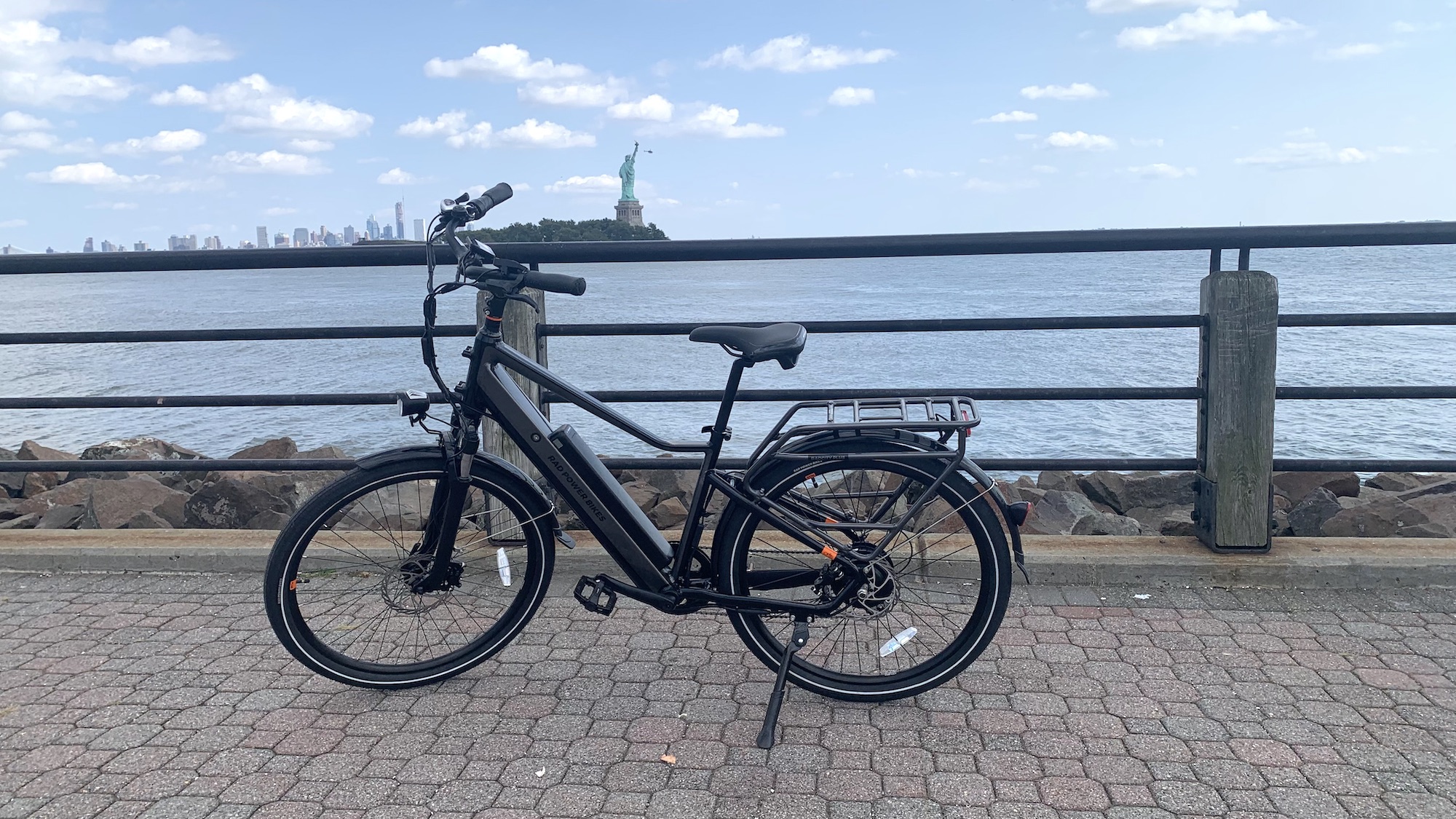
Rad Power RadCity 5 Plus review: Design
While not as aesthetically clean as the now-defunct VanMoof S3, the RadCity 5 Plus has a nice, sturdy familiar feel.
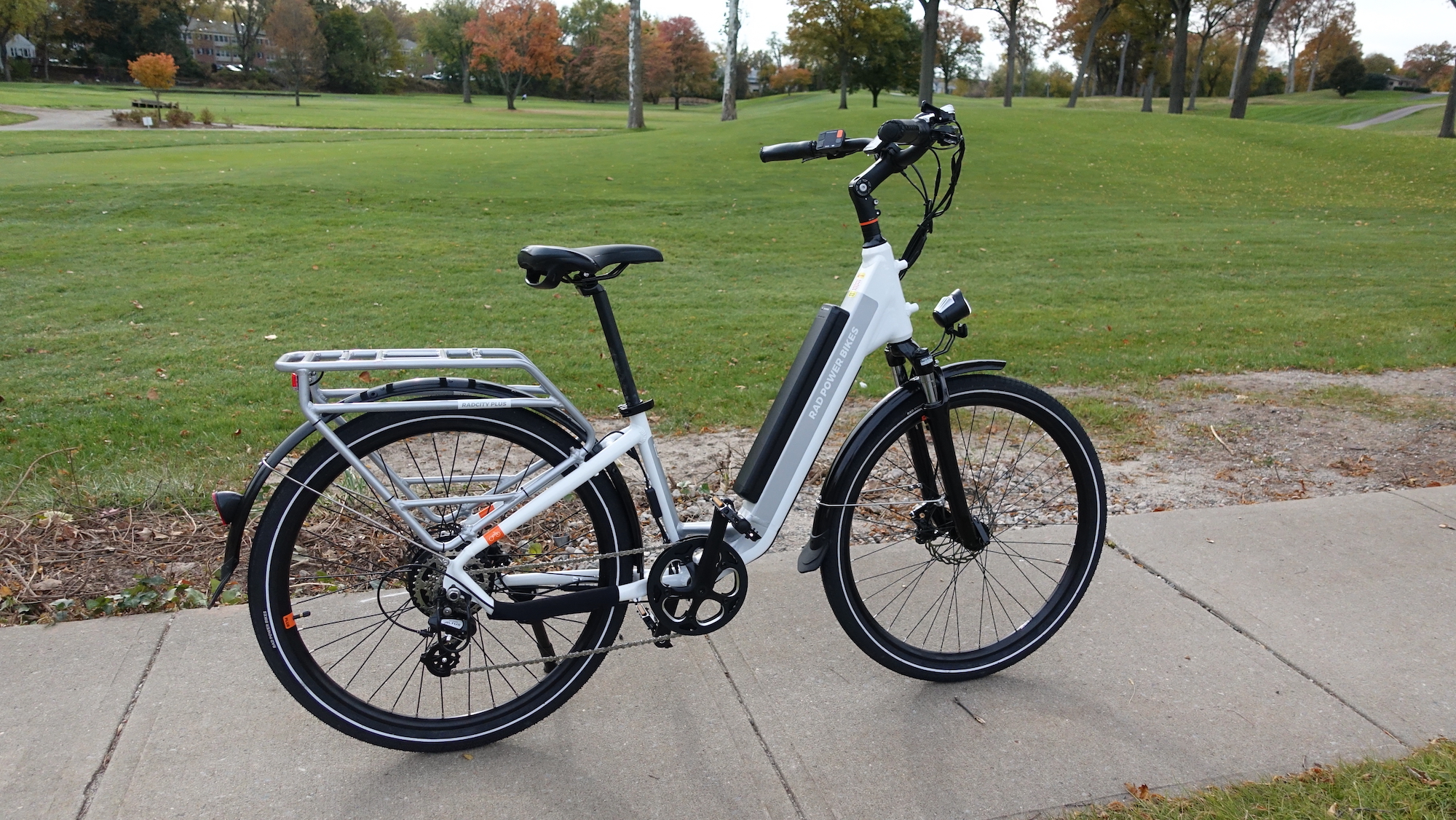
With both versions, a large removable rectangular battery pack protrudes partly from the downtube; while it would look sleeker if it was flush, it’s not a dealbreaker. My biggest quibble is the mess of wires which extend from the handlebars to the main body of the bike; while they're neatly organized, there are so many it can look like a real jumble.
Get instant access to breaking news, the hottest reviews, great deals and helpful tips.
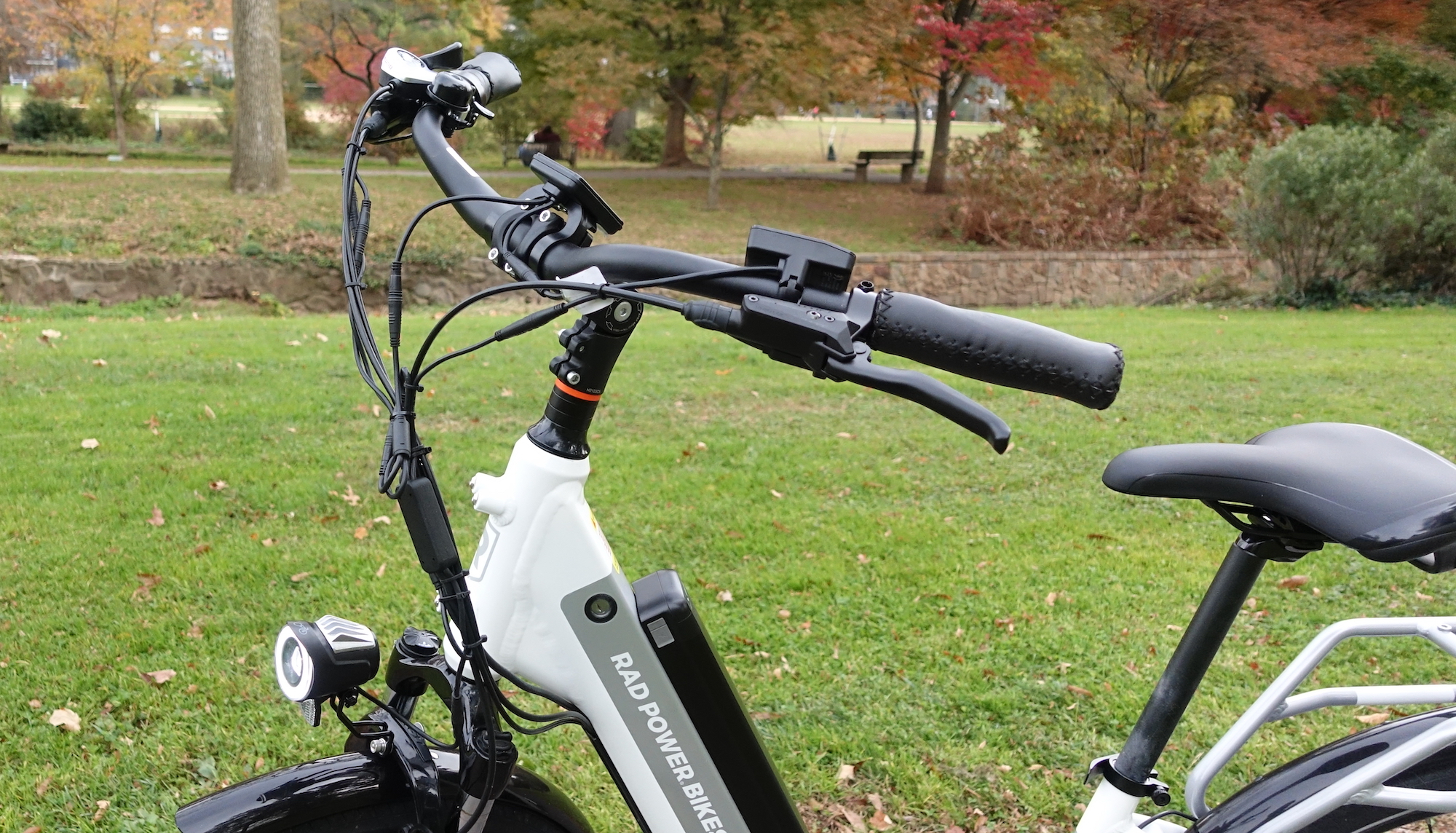
Rad Power includes about as many mounting points as you could ask for: Above the front fork are four screw holes for a front basket and the bike also comes with a rear rack, to which you can attach a child seat, panniers and more.
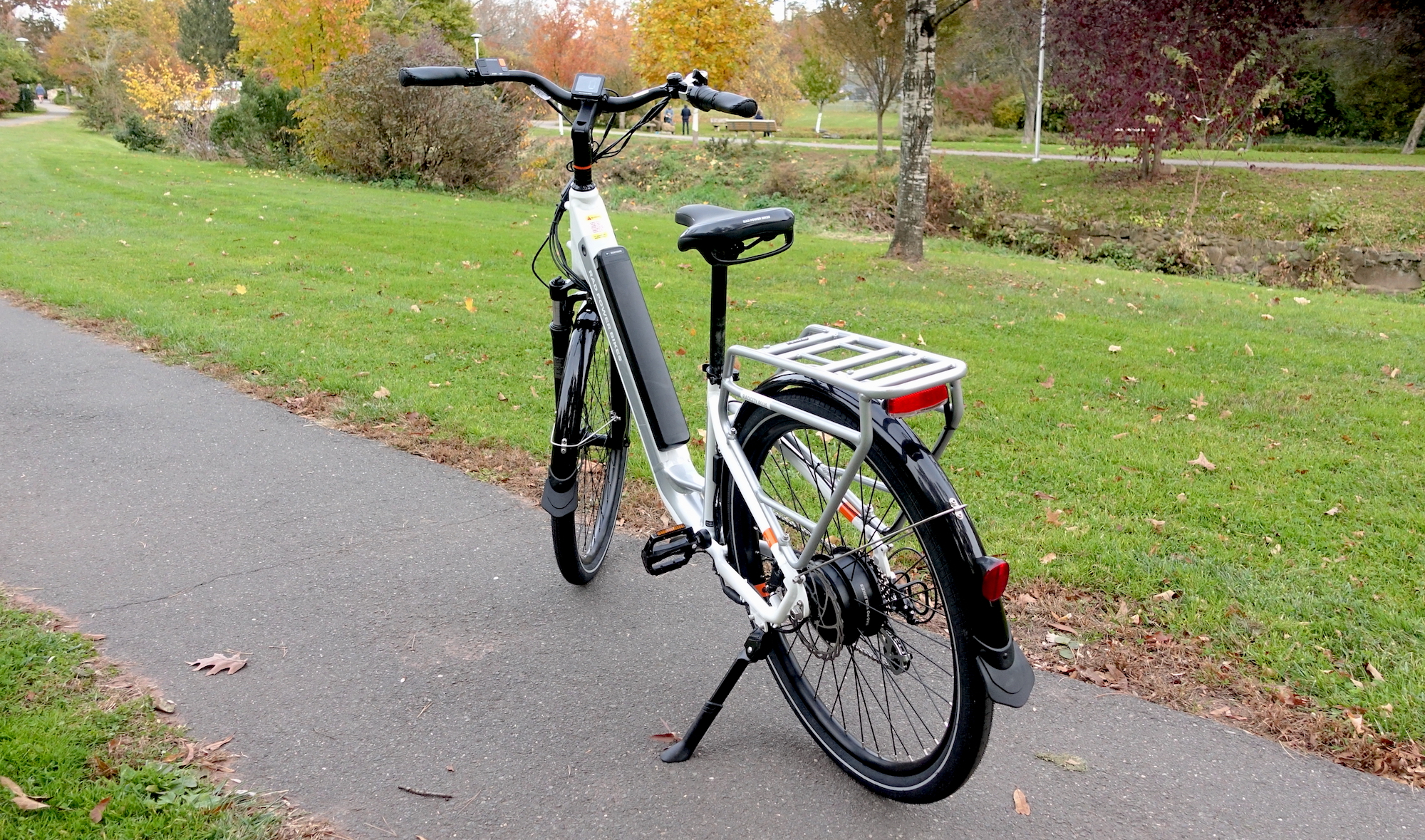
In the center of the handlebars is a small LED display that shows your current speed and how much power is being delivered by the bike’s rear hub motor. Next to the left handlebar is a smaller display that shows which level of assist you’re using, as well as if the bike’s lights are turned on.

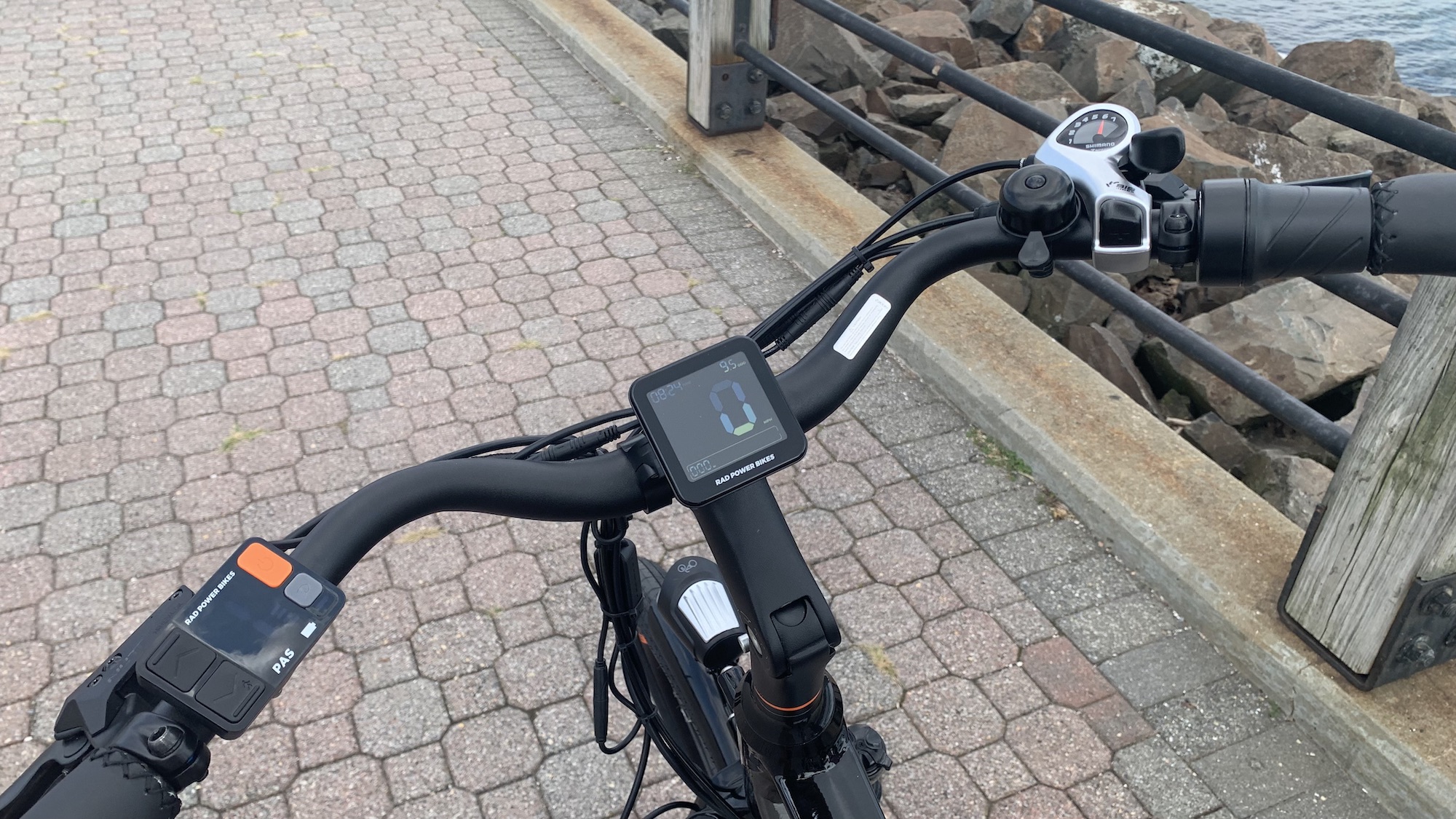
Two buttons on the right of the display let you adjust the level of assist and turn the lights on and off. While being able to see what this screen is showing is less crucial than the main display, I did wish it were a bit brighter, as it was hard to see in direct sunlight.

The RadCity 5 Plus’ partially flush battery locks into place with a key, and pops out easily. A small battery meter at the top end shows you how much juice is left. The bike comes with head and tail lights, and mudguards also come standard — a nice touch. Topping it all off are hydraulic brakes that were very responsive.
Rad Power RadCity 5 Plus review: Performance
This is one enjoyable bike. As I was riding around my neighborhood, I appreciated the RadCity 5 Plus’ beach cruiser-style setup, which allowed me to really take in everything around me. It’s also helpful if you’re riding in the city, and need to be alert for cars.

The bike’s front shock absorbers helped smooth out potholes in the road, but my toddler still asked me why the road was bumpy.
The imitation-leather handgrips were incredibly comfortable, with the right combination of padding and grippiness; the palms of my hands felt as good after my rides as before it.
The RadCity’s pedal-assist kicked in very quickly and smoothly, as did its throttle. The RadCity 5 has a conventional Shimano 7-speed shifter that was fast, but I often found myself in too high a gear after I came to a stop and tried to start pedaling again; I quickly learned to give the throttle a twist when starting off to get up to speed quickly.
Rad Power RadCity 5 Plus review: Battery life and range
Rad Power says the 48V, 14 Ah (672 Wh) battery in the RadCity 5, combined with redesigned tires, give this bike 11% more range than the RadCity 3, its previous-generation commuter bike that costs $1,599 and has an advertised range of 45 miles.
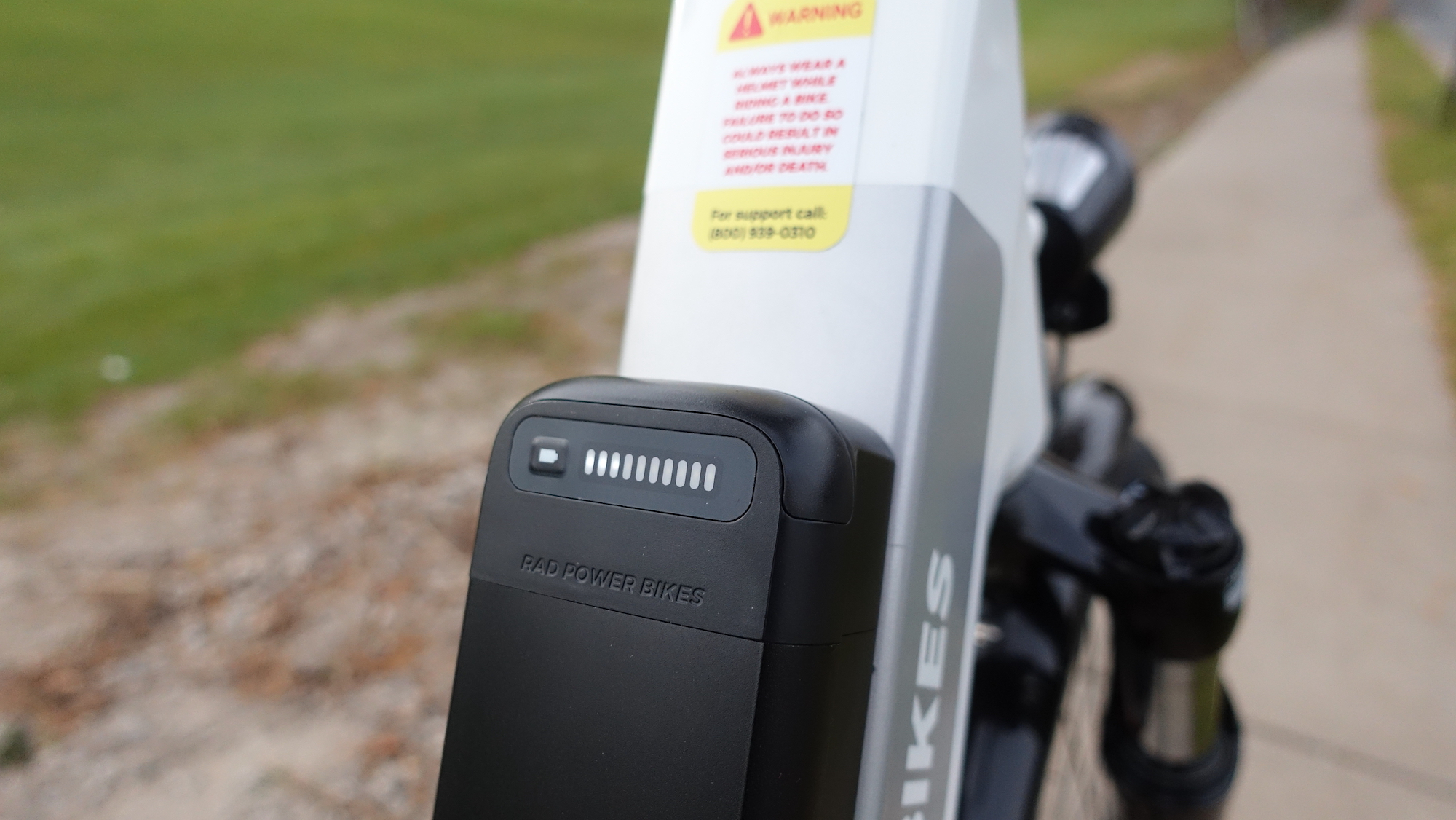
Range, of course, is highly dependent on a variety of factors. After about 20 miles of riding somewhat hilly terrain (most with a 27-pound toddler on the back) using the highest assist level and throttle occasionally, I had used about 50 to 60 percent of the battery remaining.
Rad Power RadCity 5 Plus review: Competition
The RadCity 5 Plus finds itself in competition with lots of other commuter-style electric bikes in the $1,500-$2,000 price range. There are too many to list here, but to take just a couple of examples you could also consider the Charge Bikes City or Aventon Pace 500.
For $100 less, the Charge Bikes City offers similar performance, but has a few features — such as folding handlebars and pedals — that make it better suited to those in apartments. It, too, has mudguards, lights, and comes with a rear rack. However, the RadCity 5’s rear rack can support more weight (up to 275 pounds), and it has more mounting points on the front.
The Aventon Pace 500 ($1,500) also advertises a 40-mile range and a top speed of 28 miles per hour, though accessories, such as fenders, lights, and a rear rack, are sold separately.
Rad Power RadCity 5 Plus review: Verdict
While Rad Power calls this electric bike the RadCity 5 Plus, it’s great for the suburbs, too. It’s very comfortable to ride, offers plenty of power, and has a number of amenities and accessories that make it very versatile, which is why it's at the top of our list of the best electric bikes.
Those living in tighter quarters may prefer the Charge Bikes City or even a folding bike such as the Brompton Electric. If space is less of a concern, the RadPower RadCity 5 Plus should be at the top of your list, and if you want to haul a lot of cargo (or your kids), the RadRunner 3 Plus is also one to consider if you're looking for the a great overall ride.

Michael A. Prospero is the U.S. Editor-in-Chief for Tom’s Guide. He oversees all evergreen content and oversees the Homes, Smart Home, and Fitness/Wearables categories for the site. In his spare time, he also tests out the latest drones, electric scooters, and smart home gadgets, such as video doorbells. Before his tenure at Tom's Guide, he was the Reviews Editor for Laptop Magazine, a reporter at Fast Company, the Times of Trenton, and, many eons back, an intern at George magazine. He received his undergraduate degree from Boston College, where he worked on the campus newspaper The Heights, and then attended the Columbia University school of Journalism. When he’s not testing out the latest running watch, electric scooter, or skiing or training for a marathon, he’s probably using the latest sous vide machine, smoker, or pizza oven, to the delight — or chagrin — of his family.

